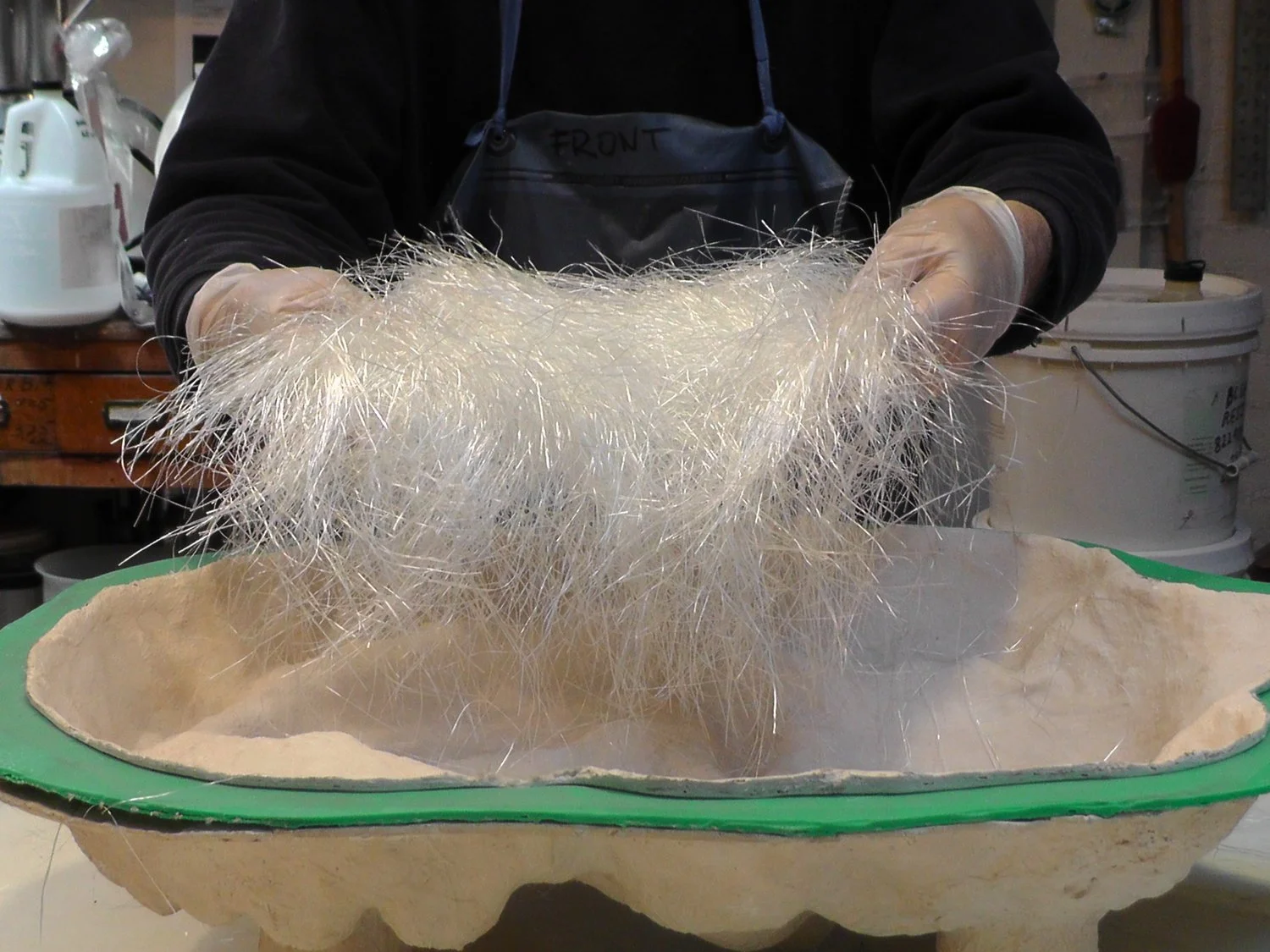We are always happy to listen to advice from our customers: A recent communication regarding our Aqua-Glass fibers suggested that our calling it “chopped” was misleading and discouraged customers from trying it.
Their point, one well taken, is that chopped fiberglass has an established use, quite different from the uses for which our cut Aqua-Glass is intended. Conventional chopped fiberglass, usually offered in ¼” and ½” lengths is often just used as a filler material or more correctly as a means to provide a small amount of strength to a brushable coat of polyester or epoxy.
Our Aqua-Glass Cut Glass Fiber products are engineered for very different purposes. The two longer cuts, 3 ½-1” and 4 ½” are to be used as the principal reinforcing fiber in an Aqua-Resin laminate. Because of correct binder compatibility with Aqua-Resin mixes and the unusually long fiber lengths, they produce substantially stronger laminates than would conventional chopped strand mat. The 3 ½-1” is used for laminates with tight curves and irregular geometry, while the 4 ½” is useful for rapid building of flatter areas or gentle curves. Both may be tamped onto a layer of fresh Aqua-Resin mix with a stiff brush and/or a hard ridged fiberglass roller.
The ½” and 1” cuts are most often used to reinforce a gel coat or for reinforcing undercuts where longer fibers would be more difficult to position. In the case of gel coats, the soluble binder allows the individual glass filaments to separate out and thereby rendering them invisible in the gel coat.
16 Greene Street
New York, NY, 10013
212 226 1208
An easy to use, non-toxic composite fabrication resin.
Your Custom Text Here

